14 Nectar-Rich Native Plants For Attracting Hummingbirds
Creating a garden that attracts hummingbirds starts with choosing the right plants. Native plants are an excellent option, as they offer the nectar that these birds crave. By adding the right flowers to your yard, you can help support local wildlife while adding vibrant colors to your landscape. It is easy to get started, and the rewards are incredible. Discover which plants will bring hummingbirds to your garden and make it come alive with movement.
This post may contain affiliate links, which helps keep this content free. Please read our disclosure for more info.
Bee Balm
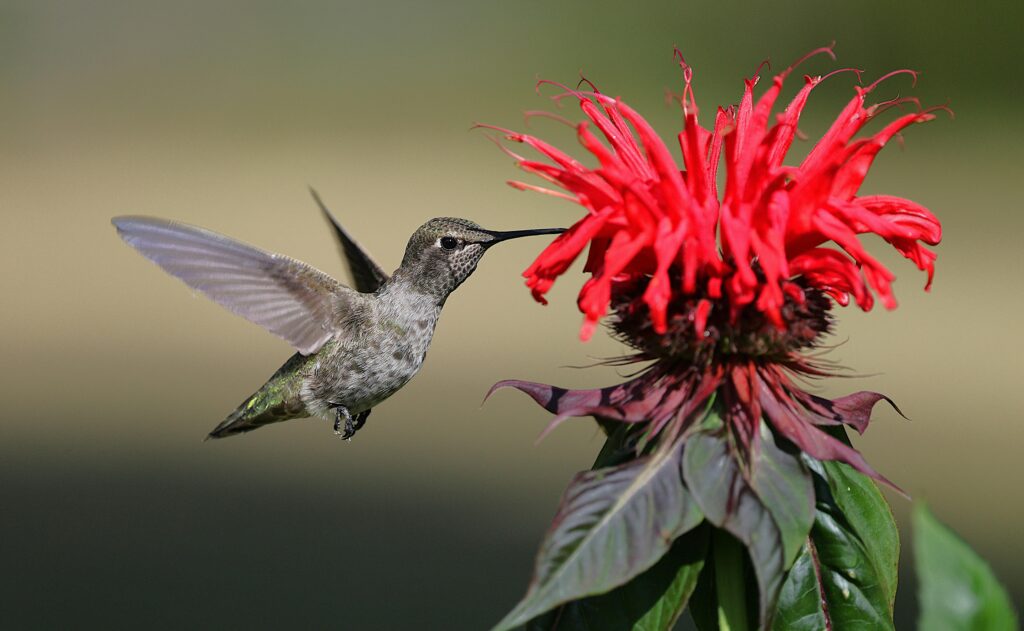
Bee Balm is a native plant that attracts hummingbirds with its bright red, pink, or purple flowers. It thrives in moist, well-drained soil and prefers partial to full sun. This perennial plant grows up to 4 feet tall and blooms from mid-summer to fall. Bee Balm also attracts bees and butterflies, making it an excellent choice for a pollinator-friendly garden.
Bee Balm is easy to grow and requires little maintenance once established. It can be used in flower beds or naturalized areas of your garden. The plant’s aromatic leaves also have culinary and medicinal uses, adding versatility to your garden. Be sure to plant it in a spot where it gets plenty of sunlight and watch as hummingbirds come to feed.
Trumpet Vine
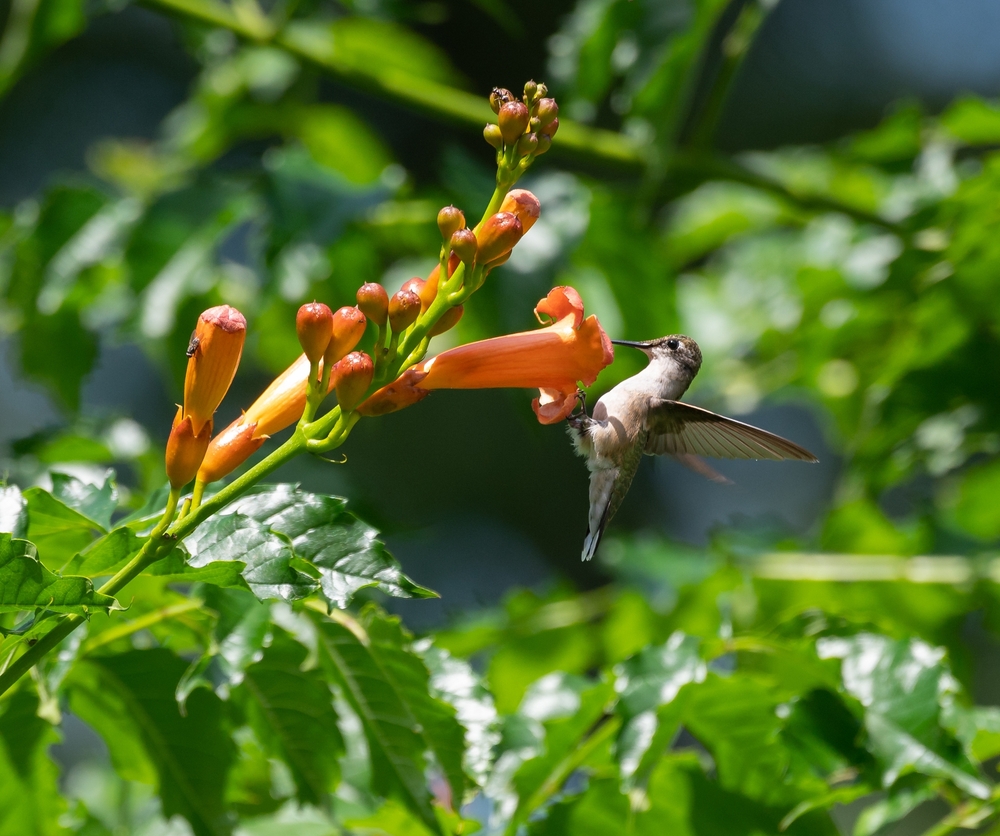
Trumpet Vine is a fast-growing native plant known for its vibrant orange or red tubular flowers. This plant is perfect for attracting hummingbirds, as they are drawn to its trumpet-shaped blooms. It thrives in full sun and can grow quickly, reaching heights of up to 40 feet, making it ideal for trellises or fences. It is also drought-tolerant once established, making it a low-maintenance option for your garden.
While trumpet vines are beautiful, they can be invasive in some areas, so make sure to prune and maintain them regularly. They prefer well-drained soil and can adapt to various types of soil conditions. The plant’s long-lasting blooms provide plenty of nectar for hummingbirds, ensuring they keep coming back. Be sure to give it space to grow and climb, and you will have a stunning, bird-friendly addition to your garden.
Columbine

Columbine is a native wildflower that features striking red and yellow flowers, which are especially attractive to hummingbirds. It grows well in partial shade and can tolerate various soil types, making it easy to incorporate into many garden settings. Columbine’s delicate flowers bloom in spring and early summer, providing early-season nectar for hummingbirds. It typically grows 1 to 2 feet tall, making it suitable for borders, woodland gardens, or wildflower meadows.
This plant thrives in moist, well-drained soil and requires minimal care. Columbine also attracts butterflies, adding additional charm to your garden. It is an excellent choice for adding color to shaded areas while providing a food source for hummingbirds. If you are looking for a low-maintenance plant that attracts both pollinators and birds, Columbine is a perfect option.
Coral Honeysuckle
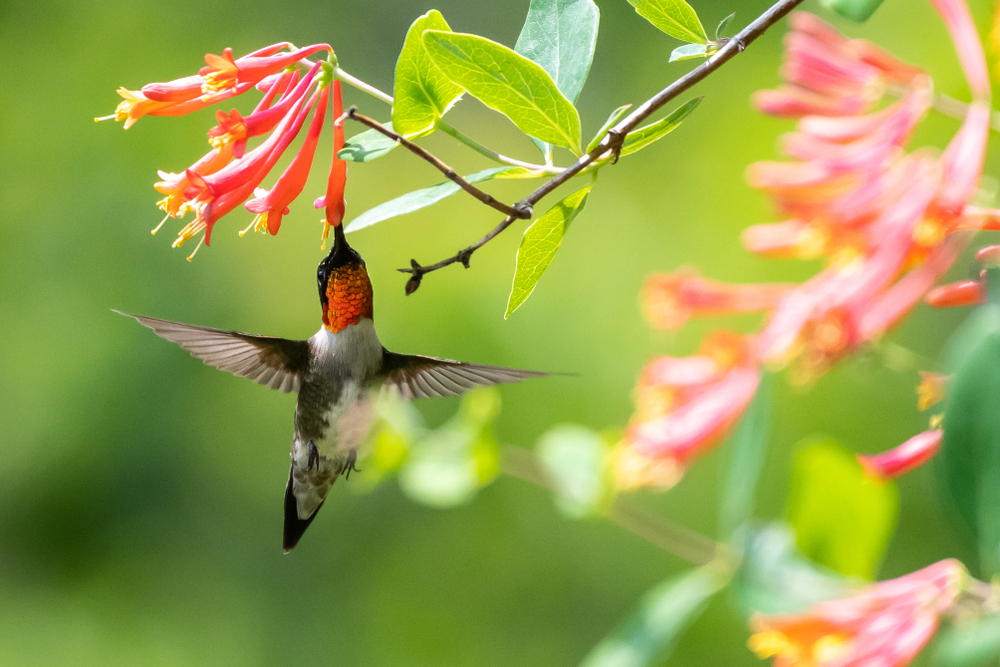
Coral Honeysuckle is a native vine that produces clusters of red or orange tubular flowers, perfect for attracting hummingbirds. It can be grown on trellises, fences, or allowed to climb nearby shrubs. This plant prefers full sun but can tolerate partial shade, thriving in well-drained, moist soil. Its vibrant blooms are not only a source of nectar for hummingbirds, but they also add a touch of elegance to your garden.
Coral Honeysuckle is a hardy vine that can grow up to 20 feet in length, offering plenty of coverage for garden structures. It is relatively low-maintenance, though regular pruning will help maintain its shape and encourage more blooms. This vine is an excellent choice if you want a hummingbird-friendly plant that adds beauty and attracts other pollinators as well. It is also deer-resistant, making it a great addition to various garden environments.
Salvia
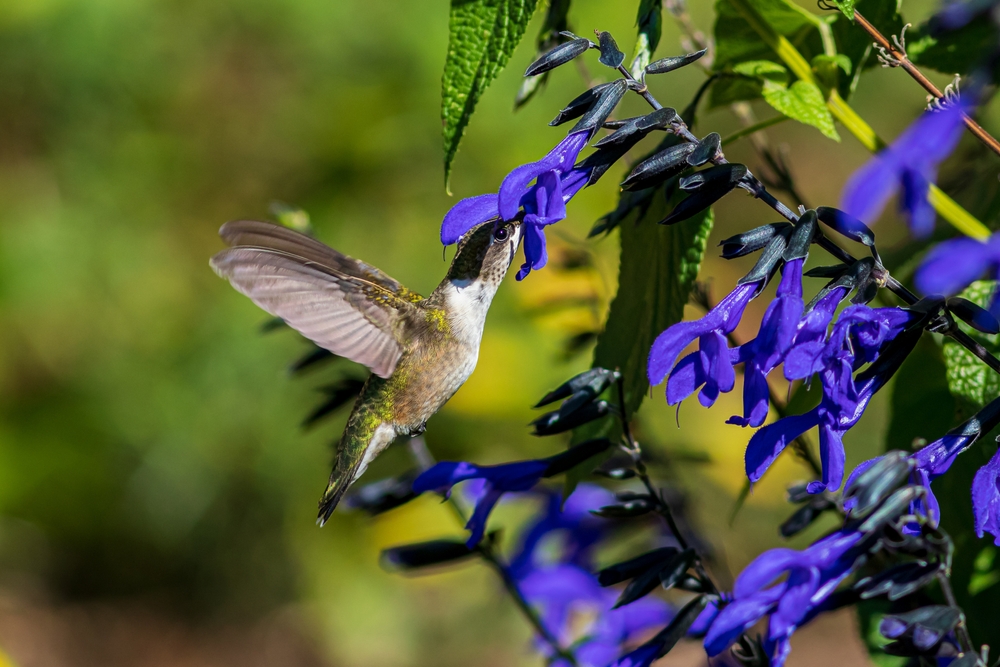
Salvia is a versatile and colorful native plant that hummingbirds find irresistible. Its tubular flowers come in a variety of colors, including red, purple, and pink, making it an attractive addition to any garden. Salvia grows well in full sun and well-drained soil, and it blooms throughout the summer, offering a steady supply of nectar for hummingbirds. It is also drought-tolerant once established, making it an ideal choice for low-maintenance gardening.
This perennial plant typically grows 1 to 4 feet tall and can be planted in garden beds, containers, or even as ground cover. Salvia’s long-lasting flowers attract not only hummingbirds but also butterflies and bees, making it a great pollinator plant. It is easy to care for and resistant to pests, making it a hassle-free option for your garden. Add Salvia to your landscape to bring both beauty and wildlife into your garden.
Red Hot Poker
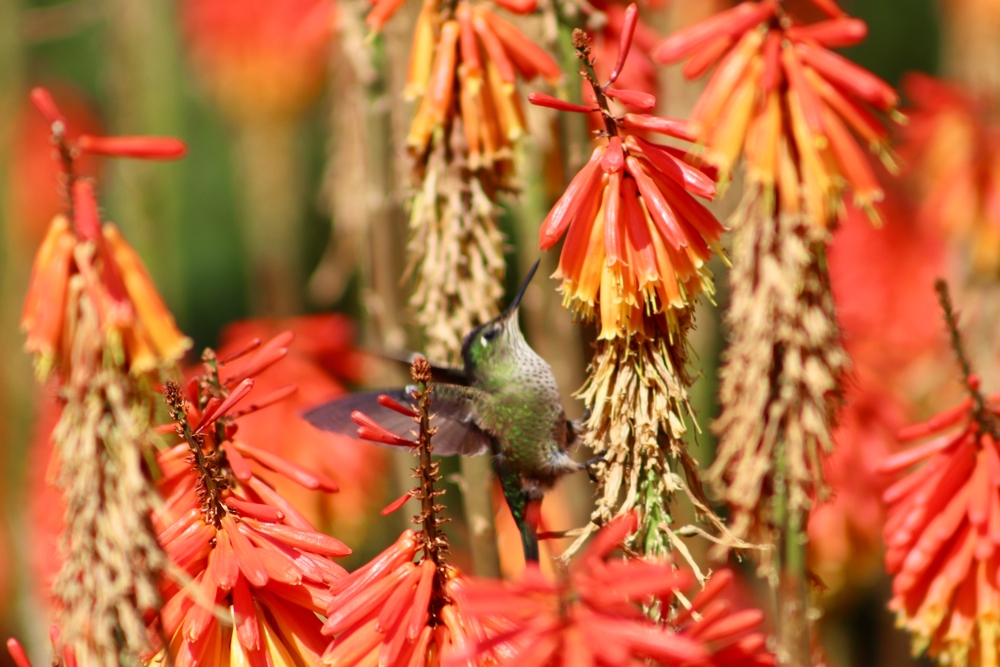
Red Hot Poker is a striking plant with tall spikes of red, orange, or yellow tubular flowers that hummingbirds find irresistible. It thrives in full sun and well-drained soil, making it an excellent choice for sunny garden spots. This plant typically grows 3 to 5 feet tall and blooms from late spring to early summer, providing a reliable nectar source. Red Hot Poker’s bold colors and tall stature make it a standout in any garden.
It is a low-maintenance plant that is drought-tolerant once established, making it suitable for gardens in areas with dry conditions. While it may go dormant in winter, it will return each spring to offer a fresh batch of vibrant flowers. Red Hot Poker attracts not only hummingbirds but also bees and butterflies. Its long-lasting flowers provide a steady food source for a variety of pollinators.
Indian Paintbrush

Indian Paintbrush is a unique native plant known for its bright red or orange flower spikes that resemble a painter’s brush. It typically grows in well-drained soil and full sun, often found in prairies and open fields. This plant is a great choice for attracting hummingbirds, as its vivid flowers are packed with nectar. It is a perennial that grows 1 to 2 feet tall, making it ideal for wildflower gardens or naturalized areas.
Indian Paintbrush thrives in dry, sandy soil, and its drought-tolerant nature makes it a perfect fit for low-water gardens. It is often found growing alongside other wildflowers, creating a vibrant and natural look. While it does not require much attention, it does need well-drained soil and ample sunlight to thrive. Indian Paintbrush adds a pop of color to any garden while offering a food source for hummingbirds and other pollinators.
Lobelia
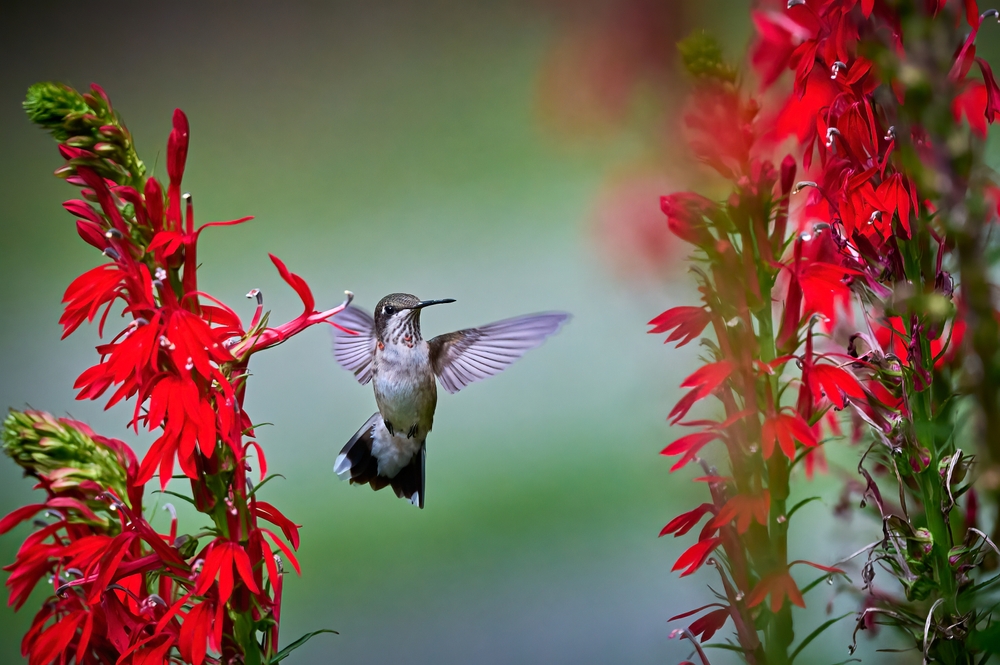
Lobelia is a native perennial known for its brilliant red, tubular flowers that attract hummingbirds. It grows well in moist, well-drained soil and can tolerate partial shade, making it a versatile plant for various garden conditions. Lobelia blooms in mid to late summer, providing a valuable nectar source for hummingbirds during the warmer months. This plant typically grows between 1 to 3 feet tall, making it perfect for flower beds or along the edges of garden paths.
Lobelia is a low-maintenance plant that adds vibrant color and wildlife to your garden. It can be grown in containers, hanging baskets, or directly in the ground. Its flowers are not only loved by hummingbirds but also attract bees and butterflies, making it an excellent addition to any pollinator garden. With its long bloom period, Lobelia provides a steady source of nectar throughout the summer months.
Purple Coneflower
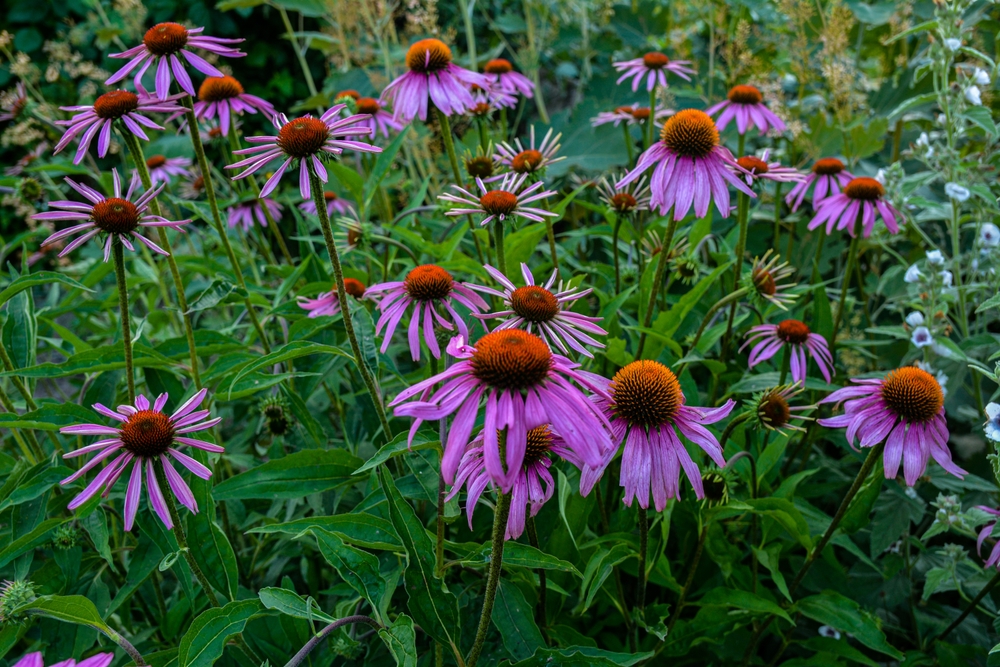
Purple Coneflower is a native wildflower known for its purple, daisy-like flowers and conical center. It thrives in well-drained soil and full sun, making it perfect for garden beds or wildflower meadows. This plant attracts hummingbirds, butterflies, and bees, providing a rich nectar source. Purple Coneflower grows between 2 to 4 feet tall and blooms from summer to fall, offering a long-lasting food source for pollinators.
Purple Coneflower is a hardy, low-maintenance plant that is drought-tolerant once established. Its flowers are easy to grow and can withstand a range of soil conditions. This plant’s attractive blooms and wildlife benefits make it an ideal choice for creating a garden that supports local pollinators. It is a great addition to any garden, adding both beauty and ecological value.
Firecracker Plant
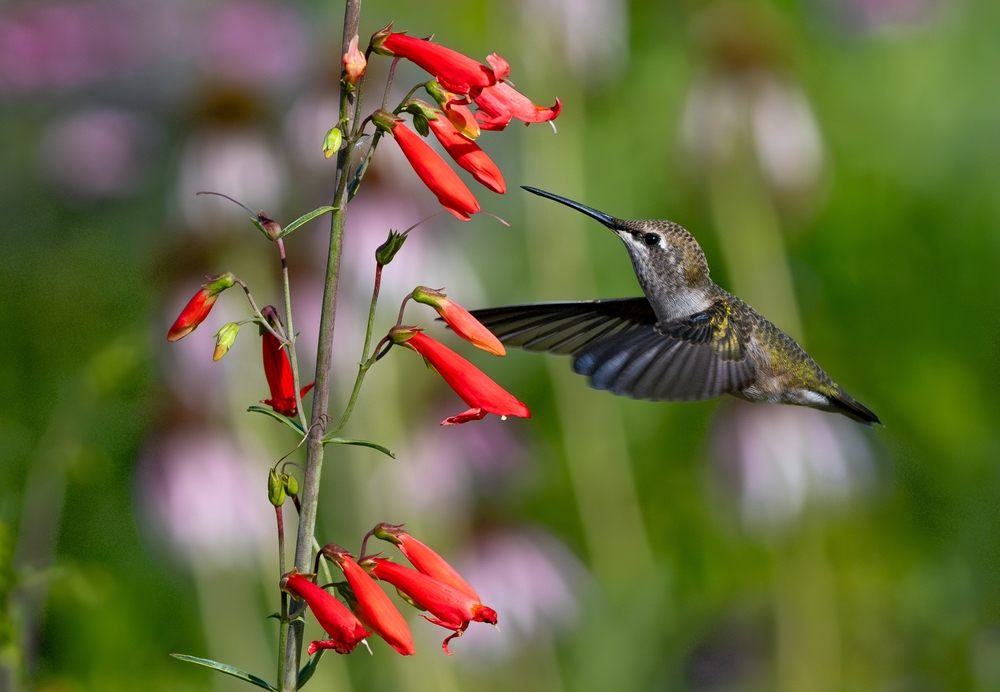
The Firecracker Plant, known for its cascading red tubular flowers, is a hummingbird favorite. This native plant is perfect for attracting hummingbirds with its rich nectar and vibrant blooms. It thrives in full sun and well-drained soil, growing 2 to 3 feet tall. Its flowers bloom continuously from spring through fall, ensuring a consistent nectar source for hummingbirds.
This plant is drought-tolerant and low-maintenance, making it an excellent addition to gardens in dry climates. Firecracker Plant can be grown in containers or hanging baskets, allowing it to spill over and create a colorful display. Its long bloom period makes it a reliable source of nectar for hummingbirds. Firecracker Plant is a great choice if you want to add color and attract wildlife to your garden.
Wild Bergamot
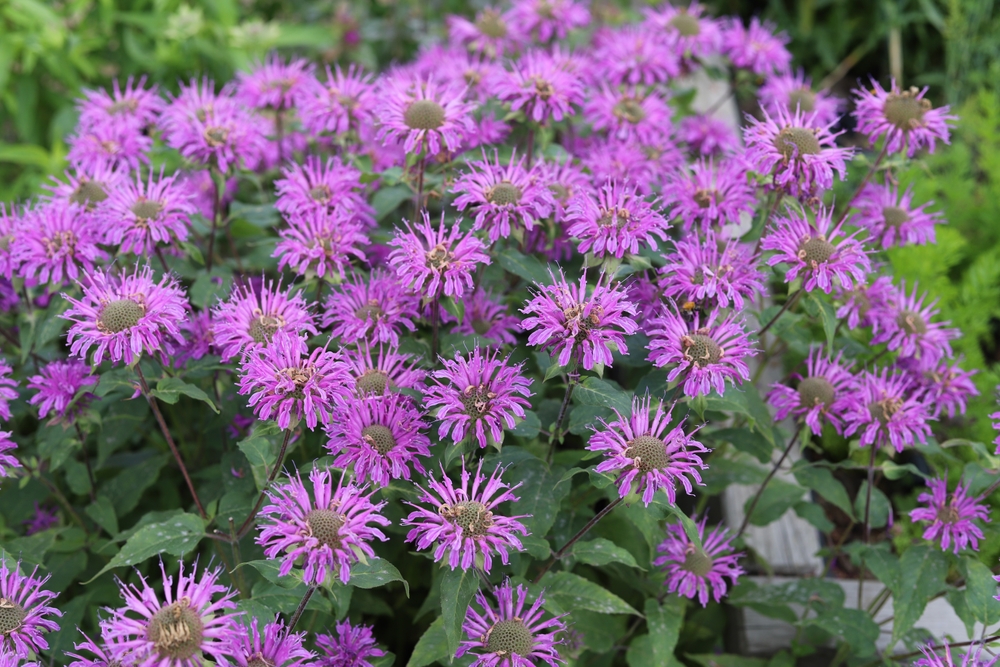
Wild Bergamot is a native plant that produces clusters of pink or purple flowers, making it a favorite of hummingbirds. It thrives in full sun and well-drained soil, growing to about 2 to 4 feet tall. Wild Bergamot’s fragrant flowers bloom from mid-summer to fall, providing a long-lasting nectar source for hummingbirds. This plant is also attractive to bees and butterflies, supporting a variety of pollinators in your garden.
This plant is easy to grow and is drought-tolerant once established, making it ideal for low-maintenance gardens. Wild Bergamot has aromatic leaves that can be used for culinary and medicinal purposes. It is a great choice for adding color and supporting local wildlife. The plant’s flowers are not only beautiful but also serve as an important food source for hummingbirds.
Golden Honeysuckle
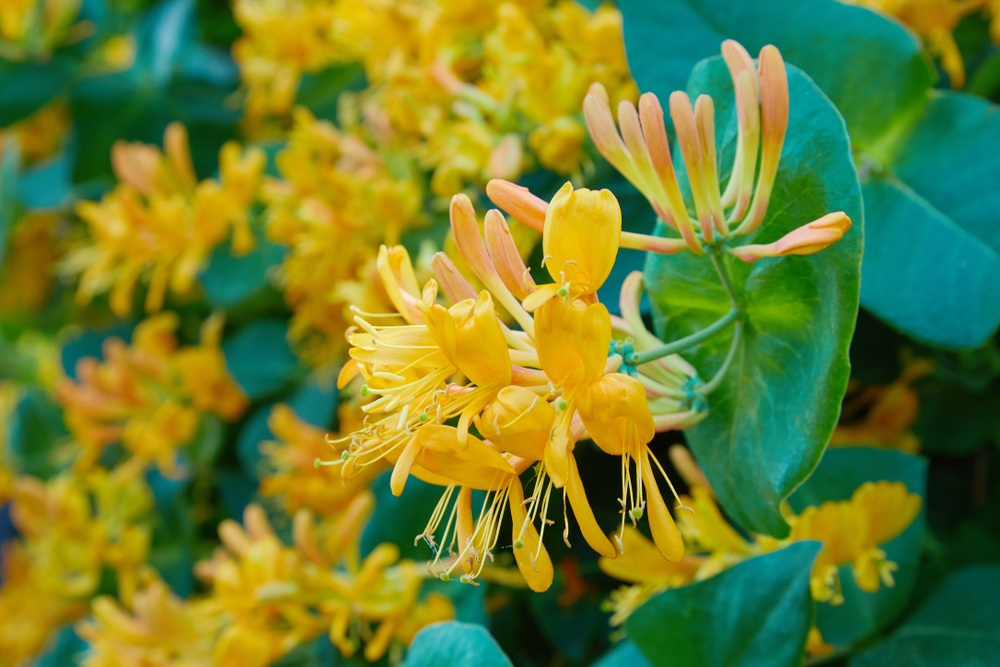
Golden Honeysuckle is a native vine that produces clusters of fragrant yellow flowers, perfect for attracting hummingbirds. It grows well in full sun or partial shade and thrives in moist, well-drained soil. The plant blooms in early spring, providing a nectar source for hummingbirds during the season when food can be scarce. Golden Honeysuckle grows 10 to 15 feet tall, making it ideal for trellises, fences, or arbors.
This vine is relatively low-maintenance, requiring little more than regular pruning to keep it in check. Its sweet-smelling flowers make it an excellent addition to your garden, not only for hummingbirds but also for bees and butterflies. Golden Honeysuckle is perfect for adding vertical interest and a touch of elegance to your landscape. It is a beautiful, wildlife-friendly plant that will attract hummingbirds all season long.
Anise Hyssop
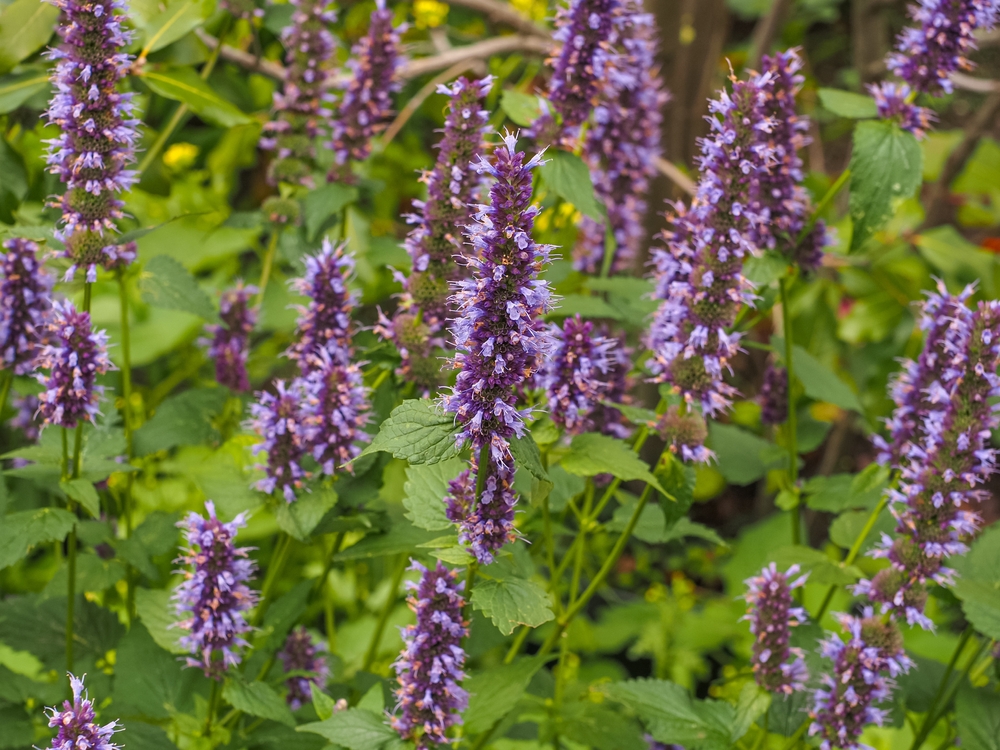
Anise Hyssop is a fragrant native plant that produces spikes of purple or blue flowers that attract hummingbirds. It thrives in full sun and well-drained soil, growing up to 3 feet tall. The plant blooms from mid-summer to fall, providing a steady source of nectar for hummingbirds. Anise Hyssop also attracts butterflies and bees, making it a great addition to any pollinator-friendly garden.
This perennial is easy to grow and drought-tolerant once established. Its aromatic leaves, which have a licorice scent, are used in teas and culinary dishes. Anise Hyssop’s long-lasting flowers are a wonderful addition to garden beds, borders, or containers. Its wildlife benefits and easy care make it an ideal plant for both new and experienced gardeners.
Fuchsia
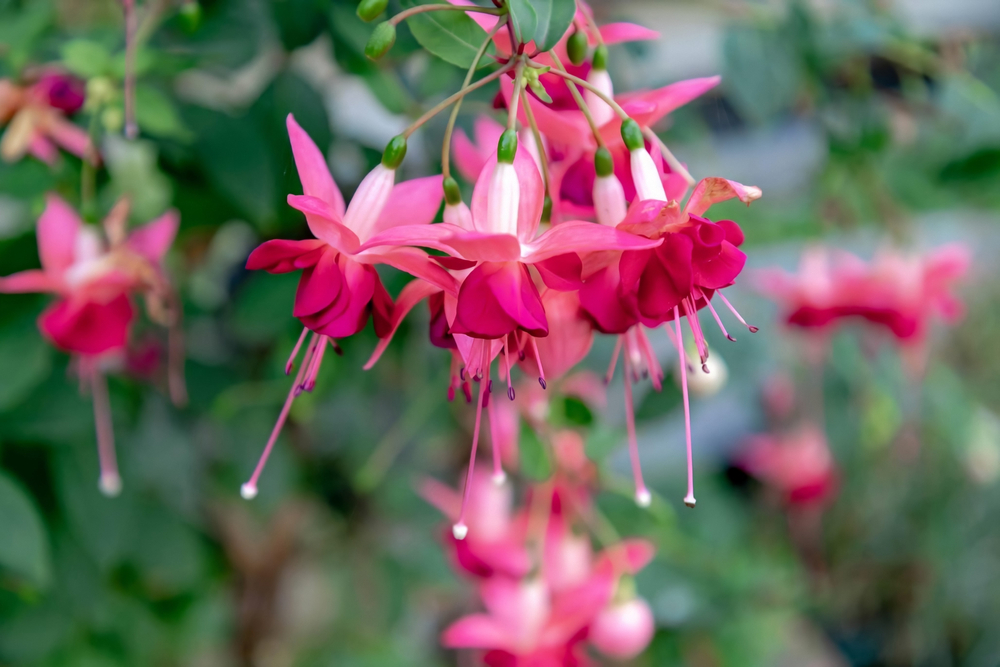
Fuchsia is a beautiful, shade-loving plant that produces drooping flowers in shades of red, pink, and purple. It is a hummingbird magnet, as its tubular flowers provide plenty of nectar. Fuchsia thrives in partial shade and well-drained soil, growing up to 3 feet tall. The plant blooms from late spring to fall, making it a reliable food source for hummingbirds.
Fuchsia is often grown as an annual, but it can be treated as a perennial in warmer climates. It can be planted in garden beds, hanging baskets, or containers, making it a versatile option for your garden. Fuchsia’s striking blooms and ability to attract hummingbirds make it a top choice for adding both beauty and wildlife benefits to your garden. It is a great plant for shaded areas where other nectar-rich plants may struggle.
Attracting hummingbirds to your garden is easy with the right plants. These native plants not only provide a rich nectar source but also add vibrant colors and beauty to your landscape. With a little care and the right selection, your garden can become a hummingbird haven. Planting these species is a wonderful way to support local wildlife and enjoy the charm of these amazing birds.
This article originally appeared on Avocadu.
